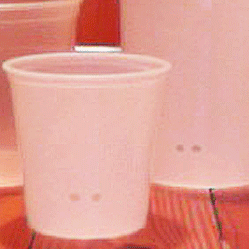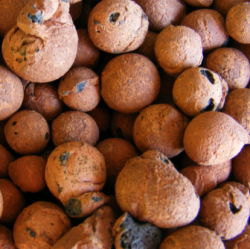+ Spanish
our favorite method!!
For many reasons:
– it’s the least demanding media for growers
– it virtually eliminates the over-watering risk
– it creates the ideal conditions for epiphytic and lithophytic orchids because there’s always nutrients and humidity available for them
– decreases rot risk by not keeping the roots soaked and providing proper aeration for them
– even though the LECA (hydroton) used in this method is more expensive than other media, it comes with a lot of benefits:
o allows constant capillarity
o it will not decompose
o it can be reused after sterilizing as many times as you want.
Most experienced orchid growers recognize that in nature orchids grow hydroponically, because they only use their hosts for mechanical support and the host provides very little, if any, nutrients to the plant. The nutrients are obtained from some elements in the air and from the water that pours down on them from the trees; this rainwater, in it’s journey down the trees, collects organic matter that then deposits on the orchids roots while watering them.
how it works:

Pots typically have holes on the side instead of on the botoom, about 1.5” from the base. This allows the formation of a water reservoir that from watering that provides constant humidity to the roots through the LECA. You can also use glass vases with or without holes, like we do, and pour almost all the water out, holding the LECA and the orchid, leaving only the reservoir.
The capillary action: is when humidity transfers upwards from one pebble to the next, from the reserve. Once the first level of pebbles is saturated, it starts transferring humidity to next one, and so on. LECA (Light Expanded Clay Aggregate) are little pebbles of clay that have been cooked in really high temperatures maiking them expand three times their original size; this process makes them really porous inside bot allows them to keep a soft outside.
How we do it with semi hydroponics: once a week we empty the water reservoir and rinse the plant with running water to get rid of excess salts. We prepare the fertilizing solution using half of what the label indicates always using room temperature water. We cover the holes (of the glass vases that have them) with insulating tape and water up to the base of the orchid. We let it sit for 10 to 20 minutes, depending on the dryness and temperature of the weather and empty the vases just leaving the reservoir. We alternate every three waterings with fertilizing with one just with water. During the colder months, we space the waterings from 7 to 10-12 days.

